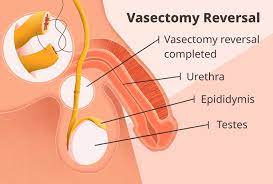A vasectomy is a common and effective method of permanent contraception for men. However, life circumstances can change, and some men who have undergone vasectomies may later desire to have children. In such cases, a vasectomy reversal can offer hope for restoring fertility. But what is the success rate of vasectomy reversal, and what factors influence it? In this article, we will delve into the vasectomy reversal procedure and explore the factors that affect its success.
Understanding Vasectomy Reversal
A vasectomy is a surgical procedure that involves cutting or blocking the vas deferens, the tubes that carry sperm from the testicles to the urethra. During a vasectomy reversal, a urologist reconnects these tubes, allowing sperm to once again flow into the semen. This procedure is technically called a vasovasostomy or epididymovasostomy, depending on the specific technique used.
Vasectomy Reversal Success Rates
The success of a vasectomy reversal is typically measured by the return of sperm to the ejaculate and the subsequent ability to achieve pregnancy with a partner. Success rates can vary based on several factors, including:
- Time Since Vasectomy: Success rates tend to be higher for men who seek reversal within the first few years after their vasectomy. The success rate gradually decreases with the passage of time, with some studies showing rates as high as 90% for reversals performed within three years and dropping to 50-70% for reversals done after 10 years.
- Surgical Expertise: The experience and skill of the surgeon performing the procedure are critical. Urologists with extensive experience in vasectomy reversal techniques tend to achieve better results.
- Obstruction Location: The location of the vasectomy blockage plays a role in success. A vasovasostomy, which involves connecting the severed ends of the vas deferens, often has higher success rates than an epididymovasostomy, which connects the vas deferens to the epididymis (a tube located on the testicle).
- Partner’s Fertility: The fertility of the male partner’s female counterpart is another important factor. If the female partner has fertility issues, the chances of achieving pregnancy may be lower.
- Age and Overall Health: The age and overall health of the man can impact success. Younger men tend to have better results, and overall health can affect the healing process.
- Sperm Quality: The quality of sperm before the vasectomy can also influence success. If sperm quality was good before the vasectomy, there is a higher likelihood of achieving pregnancy after a reversal.
Managing Expectations
It’s important for couples considering a vasectomy reversal to have realistic expectations. While success rates can be promising, there are no guarantees of pregnancy following the procedure. It may take several months for sperm to return to the ejaculate, and even then, it may require time to achieve a successful pregnancy.
Additionally, some men may not regain fertility even after a successful vasectomy reversal. In such cases, alternative fertility treatments like in vitro fertilization (IVF) may be considered.
Conclusion
Vasectomy reversal offers a potential path to restore fertility for men who have previously undergone a vasectomy. The success rate of vasectomy reversal depends on various factors, including the time since the vasectomy, the surgeon’s skill, and the individual’s health. Couples considering this procedure should consult with a urologist specializing in vasectomy reversals to assess their unique circumstances and discuss their chances of success. While there are no guarantees, many couples have successfully achieved pregnancy through vasectomy reversal, making it a viable option for those seeking to expand their families
Also Read: Topamax ruined my marriage


